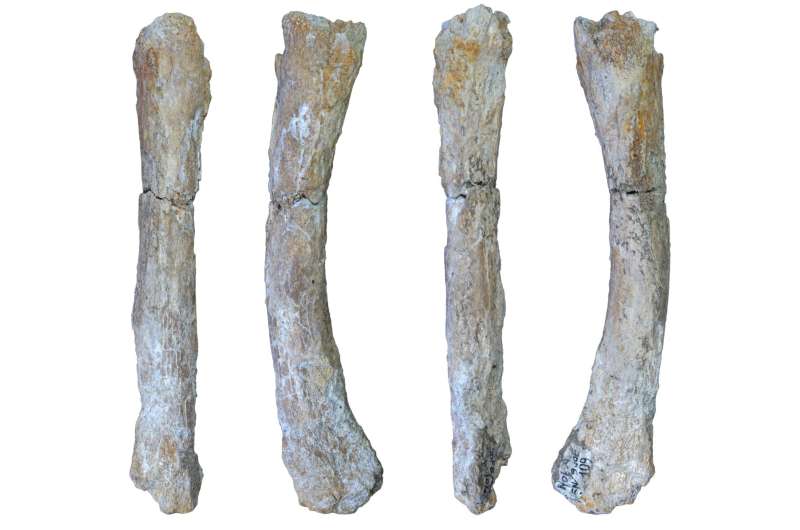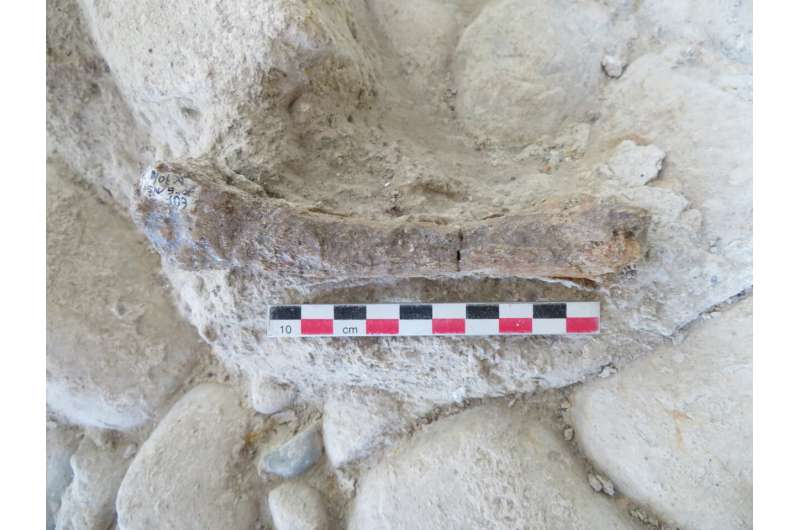This article has been reviewed according to Science X's editorial process and policies. Editors have highlighted the following attributes while ensuring the content's credibility:
fact-checked
peer-reviewed publication
trusted source
proofread
Earliest evidence of cave lions in southern Europe discovered

Cave lions lived in what is now Italy around 660,000 to 610,000 years ago. This is confirmed by a metatarsal bone from the Notarchirico site near Venosa in the Basilicata region, which was discovered during a re-examination of earlier finds. It is the oldest evidence to date of the now extinct big cat in southern Europe.
It was identified by an international research team with Dr. Alessio Iannucci from Terrestrial Palaeoclimatology at the University of Tübingen as the main author of the paper that has been published in the Journal of Quarternary Science.
The archaeological site of Notarchirico provided the oldest human fossil in Italy, probably an adolescent Homo heidelbergensis. The site is also well-known because it yielded one of the earliest evidence of the Acheulean culture in Europe and documents recurrent human settlement in the period between 695,000 and 610,000 years ago.
The Acheulean culture, which appeared around a million years earlier in Africa, was characterized by the production of hand axes (worked on both sides) and other new stone tools.
Climate and environmental change
"Appearing more than 600,000 years ago in Europe, the Acheulean culture quickly spread to the northern and southern regions," Alessio Iannucci says. Around the same time, during the transition between the Early and Middle Pleistocene, lions and several other large mammals also spread across Europe.

"During this period, the rhythm of the cycles of glacial and interglacial periods changed. The cycles became longer, extending from around 40,000 years to 100,000 years. This was accompanied by strong and recurring climate and environmental changes," says Iannucci. This would have placed great demands on the ecological and behavioral adaptation of both humans and other species at the time.
"We are interested in the factors that played a role in the spread of the Acheulean. We are also using the large mammals as a source of information," says Iannucci.
Around 900,000 to 700,000 years ago, giant hyenas became extinct in Europe, while other large mammals such as the European forest elephant, red deer and wild boar arrived from Asia and Africa. "Our discovery of an over 600,000-year-old Panthera spelaea, as the cave lion is scientifically known, reinforces the idea that this species was part of this major faunal renewal."
More information: Alessio Iannucci et al, Early occurrence of lion (Panthera spelaea) at the Middle Pleistocene Acheulean site of Notarchirico (MIS 16, Italy), Journal of Quaternary Science (2024). DOI: 10.1002/jqs.3639
Journal information: Journal of Quaternary Science
Provided by Universitaet Tübingen





















